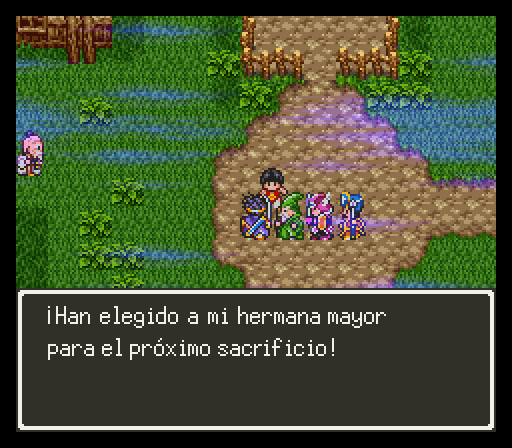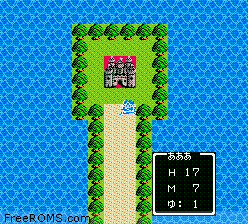

The Hero's personality is determined by the player's choices and actions during a dream sequence at the start of the game, while other characters' personalities are determined by their status at the end of the character generation process. Also, each character has a personality trait which affects the growth rate of their abilities. In the remakes, after selecting a character, the player can change the character's starting abilities with five magical seeds, given at the tavern. Another innovation is an arena where the player can place bets on the outcome of monster battles in order to win more gold. Although only four characters can be in the party at a time, extra members of the party can be kept at the tavern, allowing room for new recruits.

Unlike most Dragon Quest parties, aside from the Hero, the party is not made up of characters involved in the story. This allows a player to create a character that knows Wizard spells but has the defense of a Soldier. A character who changes classes has their stats halved and restarts at experience Level 1, retaining their spells and, in the remakes, their personality. Furthermore, upon reaching experience Level 20, a character has the option of changing classes at the temple of Dhama, found halfway through the game. The choice of class greatly affects the character's stats and spells he or she can learn. While the Hero always keeps the Hero class, the other characters can choose to be any of the following of either gender: Soldier (Warrior in the GBC version), Fighter, Pilgrim (Cleric), Wizard (Mage), Merchant (Dealer), Goof-Off (Jester), Sage, and Thief which was available only in the later versions. At the start of the game, the player begins as a single male or female hero but is able to recruit members at the local tavern. The class system became a staple feature of many future Dragon Quest gamesĭragon Quest III features a class system, in which each character has a certain class. In the picture, the player is reselecting one class for a character in Dhama Temple. It also allowed the player to freely swap characters in and out of their party and introduced the day/night cycle in which certain items, characters, and quests are only accessible at specific times of the day. And while earlier Dragon Quest games were non-linear in structure, Dragon Quest III featured an even more open-world experience. These include simpler door opening, a bag to store items instead of keeping them at a bank, quick item sorting with "Tidy Item" and "Tidy Bag" command, and a "Full HP" command to automate the process of casting healing and status restoring spells. The battle system is turn-based like the other games in the series, though the remakes incorporate various interface changes from later titles. The game uses basic role-playing video game conventions such as leveling up by gaining experience points and equipping items. Gathering a group of companions into a party, the Hero must travel the world, stopping at various towns and locations, and make their way to the Demon Lord Baramos' lair.ĭragon Quest III is noted for greatly expanding upon the gameplay of the original Dragon Quest and Dragon Quest II. The story follows "the Hero" who is tasked with saving the world from the archfiend Baramos. The first three Dragon Quest games are part of the same story, and Dragon Warrior III is the first game chronologically, as well as the third game that features the hero Erdrick ( Loto in the Japanese releases and Game Boy Color localization).

Later in 2021, another remake of the game titled Dragon Quest III HD-2D Remake, based on Octopath Traveler's style, was announced during the franchise's 35th anniversary livestream. It was the first time the game was given an official English subtitle.
#Dragon quest iii snes rom for android#
A version of the game for Android and iOS was released in Japan on September 25, 2014, and worldwide as Dragon Quest III: The Seeds of Salvation on December 4, 2014. The game saw an enhanced remake for the Super Famicom (the Japanese release of the Super NES) in 1996 and the Game Boy Color in 2001, and a port to mobile phones and the Wii in 20.
#Dragon quest iii snes rom series#
It is the third installment in the Dragon Quest series and was first released for the Family Computer (Famicom) in Japan and later for the Nintendo Entertainment System (NES) in North America. Dragon Quest III: The Seeds of Salvation, titled Dragon Warrior III when initially localized to North America, is a 1988 role-playing video game developed by Chunsoft and published by Enix.


 0 kommentar(er)
0 kommentar(er)
